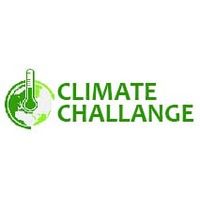
Understanding the Climate Challenge
Climate change is a natural process:
“Understanding the Climate Challenge”There are many natural factors that influence climate, such as the sun’s intensity and volcanic eruptions. However, it is now obvious that the climatic warming seen in the last century is a product of human activities that release greenhouse gases into the atmosphere.
Carbon dioxide, the most important of these gases, traps extra heat from the sun, which in turn causes global temperature changes.
While this can be a positive effect, it is also harmful to the world’s ecosystems. The effects are not only global but include increased extreme weather events, melting ice sheets and glaciers, rising sea levels and ocean acidification.
There are ways that humans can adapt to the changing climate. These adaptations may help mitigate some of the negative impacts that will be seen. For example, farmers can grow more crops or plant new varieties. But the best protection is probably through better prepared infrastructure that can absorb floods and storms.
Climate change is caused by humans:
Climate change is caused by human activities that cause a large amount of heat to get trapped in the Earth’s atmosphere. Known as greenhouse gases, these include carbon dioxide (CO2), methane (CH4) and nitrous oxide (N2O).
These gases are already naturally occurring in the atmosphere, but human activities have significantly increased their concentration since the Industrial Revolution. This is the main reason for the rise in global average temperatures.
It is also the major driver of ocean warming and changes in sea level, which are causing damage to communities and ecosystems around the world.
When scientists compare climate patterns they observe with models that use sophisticated computer algorithms to predict the climate, they can identify so-called “fingerprints” of human influence on the climate system. These fingerprints are so close to those of a long-term CO2 increase that they can be confident that humans are responsible for the majority of the observed warming.
Climate change is dangerous:
Climate change is a challenge that threatens the lives of every person on Earth. It is already causing a wide range of impacts, including the loss of sea ice and melting ice sheets, sea level rise, more intense heat waves, droughts and floods.
It’s also harming our food and water supply, putting the health of many people at risk. And it’s creating new threats to some of our most vulnerable populations, such as children and pregnant women, older adults, vulnerable occupational groups and people with disabilities.
But we can avoid the worst of it if we limit the rise in global temperatures to no more than 2.7 degrees Fahrenheit above pre-industrial levels. That’s the threshold that scientists say is critical to keeping the climate safe for people and nature.
Climate change is a challenge:
“Understanding the Climate Challenge” There are a lot of ways that people can help fight climate change. They can plant trees, conserve water, and make sure they use energy wisely.
The problem is that global warming has reached new levels of intensity, and scientists predict that if we don’t take action to curb emissions, it could lead to devastating heat waves, rising seas, crop damage, and more.
Scientists can’t stop the rise in carbon dioxide (CO2), but they can work to reduce its concentration by reducing fossil fuel burning and by improving technology to remove carbon from the air. This means preserving forests, wetlands, and other carbon sinks and developing technologies that can suck carbon from the air.
This process is called mitigation, and it’s important for everyone to do their part. City planners, emergency managers, educators, and community members can all do their part to prepare for climate change by building resilience into their communities. This will help them withstand future challenges like more intense storms, flooding, and he